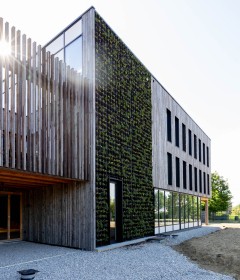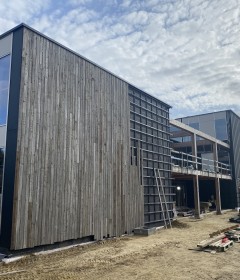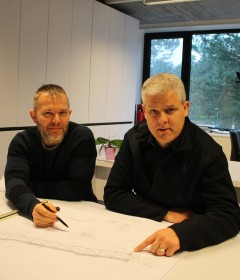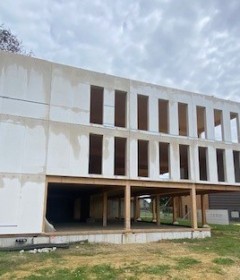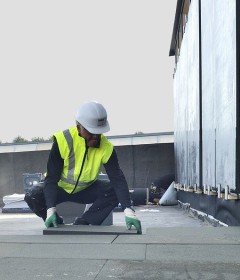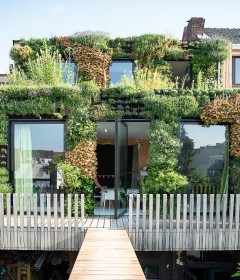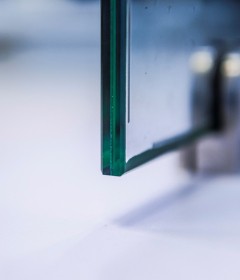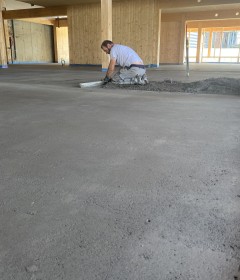5 juli 2021
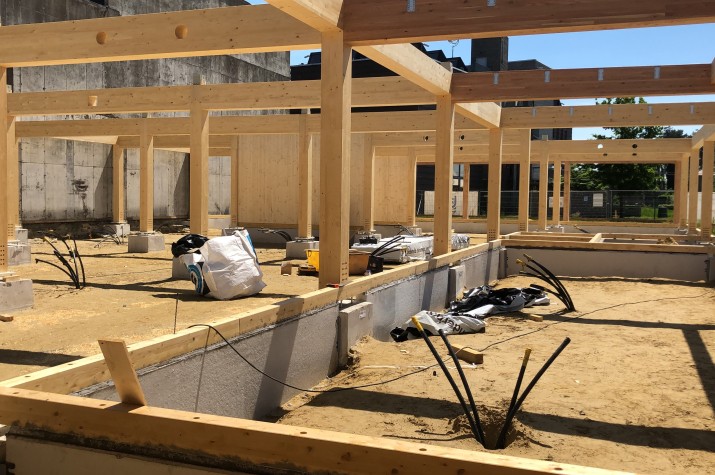
’t Centrum, the circular office building at Kamp C, uses a BTES field. Tenerga, which specialises in renewable thermal energy applications, installed the BTES field. Jan Laga, CEO of Tenerga, explains why this thermal energy system is extremely suited for a circular building and explains the advantages of shallow geothermal energy systems.
What is a BTES field?
Jan Laga: “BTES stands for borehole thermal energy storage. Vertical bores up to 150 meters deep are arranged in a grid with a spacing of 6 to 7 meters and two U-shaped loops are installed in each borehole in which a water-glycol (antifreeze) mixture circulates. These loops are then connected with each other at the surface with a collector. These loops or popes act as heat exchanges to the underground. The tubes are made from very sturdy material and have an extremely long life because they are not exposed to UV light or the elements. The system of bores with U-shaped loops and the connecting collector are referred to as a 'BTES field'.”
So how does it work?
Jan Laga: “In the summer, the soil in the BTES field (which has an average temperature of 12 °C) is used to bring coolness to the surface, which is then used to cool the building.
As a result, the soil gradually warms up a few degrees. When heat is needed in the following heating season, the circulation of water-glycol will bring heat from beneath the earth’s surface to the surface. In the technical room, water is produced at 40°C using a geothermal heat pump. This is then used to heat the building. During the winter we extract heat from the soil, which is why it cools down by a few degrees. After winter, the cycle resumes by the next cooling season. If the system is designed according to the rules of the art and is operated in the right way, energy consumption will be very low and the soil will remain in balance.”
Why are you using this thermal energy system in a circular building?
Jan Laga: “As I already explained, the principle of geothermal energy implies the reuse of summer heat in winter, thereby maximally reducing the net consumption of new energy. The energy cost is therefore also very low. You no longer need fossil fuels. All you need is electricity and where possible, this will be generated from sustainable sources. That is also the core principle underpinning circular construction.”
What are the advantages of shallow geothermal energy?
Jan Laga: “The main advantages of shallow geothermal energy are:
- The lowest consumption and maintenance costs by far; these low costs make it possible to quickly earn back the additional investment of the drilling.
- No large heat exchangers with fans on the outside of the building as is the case with conventional cooling systems or air-water heat pumps. These often are not aesthetically and acoustically pleasing.
- Gasless systems are possible.
- Renewable energy with a very low environmental impact.
- Future-proof: in a few decades geothermal energy will become the standard in Flanders, as is already the case in various European countries.
- Inside the building, heat and cooling are distributed evenly and silently, without annoying horizontal air movements (cold draft).
- Significant positive impact on EPB score, ensuring that other expensive measures (additional insulation, special glass, sun protection) are not as necessary.
- Technology is fully mature / no operational risks.
- Better safeguarding of the value of the building in the future.”
Are BTES fields widely used in Flanders? And if so, on which type of construction project?
Jan Laga: “Geothermal energy is widely used in Flanders. This applies to both private dwellings and larger projects such as offices, collective housing, hospitals, shopping centres ... The stricter building standards for insulation / building envelope, along with our progressively hotter summers, reduce the required heating capacity and increase the required cooling capacity. New homes are at risk of running into issues during the summer months problems if they are not fitted with cooling systems at the outset. Geothermal energy is by far the best solution for this.”
How long does it take to create a BTES field?
Jan Laga: “A BTES field can be built in a matter of days or weeks - depending on its size, obviously - and can easily be integrated into the planning of a construction site. A geothermal system has almost next to no impact on construction time.”
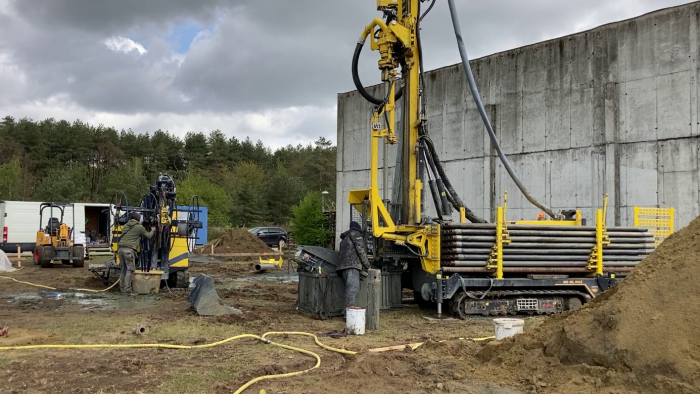
What is Tenerga’s contribution to this circular construction project? Did you already have experience with circular buildings?
Jan Laga: “Tenerga's main strength is its extensive experience with geothermal energy as applied to buildings, although we have little experience with circular buildings in particular.”
Was the decision to use shallow geothermal energy for the 't Centrum easily made?
Jan Laga: “Using shallow geothermal energy for a project of more than 1,000 sqm is almost a no-brainer. The lowest possible carbon footprint means this is the most ecological solution, in addition to being the most economical solution. The client soon understood that Tenerga could offer valuable assistance in the form of total unburdening and a full-service approach. The Total Cost of Ownership (installation cost + operational costs over lifespan) for geothermal climate control is also significantly better compared with any other system.”
Photos: BTES field of 't Centrum at Kamp C. A total of 18 vertical boreholes, each 145 m deep, were drilled on site. The probes will be connected to form a BTES field.
Further information: www.tenerga.be

